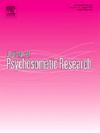住院中风患者的潜在社会心理适应特征及其与应对方式和疾病不确定性的关系:一项横断面研究
IF 3.5
2区 医学
Q2 PSYCHIATRY
引用次数: 0
摘要
目的目前对脑卒中患者社会心理适应的研究主要集中在整体水平,忽视了其异质性。本研究旨在探讨脑卒中患者潜在的社会心理适应特征,并进一步探讨其与应对方式和疾病不确定性的关系。方法于2023年10月至2024年3月在中国东南部某医科大学的两所附属医院招募住院的脑卒中患者361例。潜在特征分析用于识别脑卒中患者的潜在社会心理适应特征。结果脑卒中患者的社会心理适应分为三种不同类型:适应良好组(各维度单项平均得分最低,占32.4%)、适应中等-社会环境较差组(各维度单项平均得分中等,社会环境单项得分较高,占51.5%)和适应较差组(各维度单项平均得分最高,占16.1%)。生活状况(OR = 0.20, p = 0.018;OR = 7.72, p <;0.001),人均家庭月收入(OR = 13.32, p = 0.015;OR = 13.08, p = 0.003;或= 5.11,p = 0.038),医疗支付方式(或= 5.74,p = 0.015),夫人(或= 0.37,p = 0.015),对抗(或= 0.77,p = 0.010),模棱两可(或= 1.26,p & lt;0.001;OR = 1.22, p = 0.014)和复杂性(OR = 1.15, p = 0.045)与不同的社会心理适应特征相关。结论近三分之二的脑卒中患者社会心理适应程度中等或较差,需要进一步改善。医疗服务提供者需要在实践中采用个性化的方法来提高他们的社会心理适应水平。本文章由计算机程序翻译,如有差异,请以英文原文为准。

Latent profiles of psychosocial adaptation in hospitalized persons with stroke and their association with coping styles and illness uncertainty: A cross-sectional study
Objective
Current studies on psychosocial adaptation of persons with stroke mainly focused on the overall level and ignored its heterogeneity. The aim of the current study was to identify the latent profiles of psychosocial adaptation of persons with stroke and further explore their association with coping styles and illness uncertainty.
Methods
A total of 361 hospitalized persons with stroke were recruited at two affiliated hospitals of a medical university in southeastern China from October 2023 to March 2024. Latent profile analysis was used to identify latent profiles of psychosocial adaptation of persons with stroke.
Results
Three different profiles of psychosocial adaptation of persons with stroke were identified: good adaptation group (with the lowest item mean scores of the dimensions, accounted for 32.4 %), moderate adaptation-poor social environment group (with moderate item mean scores of the dimensions and with a high score in the social environment dimension, accounted for 51.5 %) and poor adaptation group (with the highest item mean scores of the dimensions, accounted for 16.1 %). Living status (OR = 0.20, p = 0.018; OR = 7.72, p < 0.001), per capita monthly household income (OR = 13.32, p = 0.015; OR = 13.08, p = 0.003; OR = 5.11, p = 0.038), medical payment methods (OR = 5.74, p = 0.015), mRS (OR = 0.37, p = 0.015), confrontation (OR = 0.77, p = 0.010), ambiguity (OR = 1.26, p < 0.001; OR = 1.22, p = 0.014) and complexity (OR = 1.15, p = 0.045) were associated with different profiles of psychosocial adaptation.
Conclusions
Nearly two-thirds of the persons with stroke exhibited moderate psychosocial adaptation or poor psychosocial adaptation, which needs further improvement. Healthcare providers need to adopt individualized approaches to improve their level of psychosocial adaptation in practice.
求助全文
通过发布文献求助,成功后即可免费获取论文全文。
去求助
来源期刊
CiteScore
7.40
自引率
6.40%
发文量
314
审稿时长
6.2 weeks
期刊介绍:
The Journal of Psychosomatic Research is a multidisciplinary research journal covering all aspects of the relationships between psychology and medicine. The scope is broad and ranges from basic human biological and psychological research to evaluations of treatment and services. Papers will normally be concerned with illness or patients rather than studies of healthy populations. Studies concerning special populations, such as the elderly and children and adolescents, are welcome. In addition to peer-reviewed original papers, the journal publishes editorials, reviews, and other papers related to the journal''s aims.

 求助内容:
求助内容: 应助结果提醒方式:
应助结果提醒方式:


